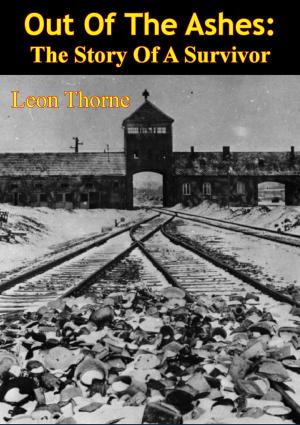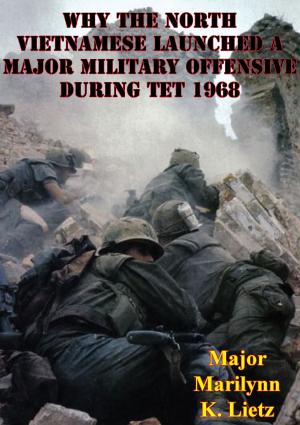Artillery In Korea: Massing Fires And Reinventing The Wheel [Illustrated Edition]
Nonfiction, History, Asian, Korean War, Military, India| Author: | D. M. Giangreco | ISBN: | 9781782899631 |
| Publisher: | Normanby Press | Publication: | November 6, 2015 |
| Imprint: | Normanby Press | Language: | English |
| Author: | D. M. Giangreco |
| ISBN: | 9781782899631 |
| Publisher: | Normanby Press |
| Publication: | November 6, 2015 |
| Imprint: | Normanby Press |
| Language: | English |
[Includes 10 photos illustrations]
The first 9 months of the Korean War saw U.S. Army field artillery units destroy or abandon their own guns on nearly a dozen occasions. North Korean and Chinese forces infiltrated thinly held American lines to ambush units on the move or assault battery positions from the flanks or rear with, all too often, the same disastrous results. Trained to fight a linear war in Europe against conventional Soviet forces, field artillery units were unprepared for combat in Korea, which called for all-around defense of mutually supporting battery positions, and high-angle fire. Ironically, these same lessons had been learned the hard way during recent fighting against the Japanese in a 1944 action on Saipan, not Korea, aptly demonstrates. Pacific theater artillery tactics were discarded as an aberration after War World II, but Red Legs soon found that they “frequently [have] to fight as doughboys” and “must be able to handle the situation themselves if their gun positions are attacked.” A second problem with artillery in Korea was felt most keenly by the soldiers that the artillery was supposed to support — the infantry. Commanders at all levels had come to expect that in any future war, they would conduct operations with fire that equaled or even surpassed the lavish support they had recently enjoyed in northwest Europe. It was clear almost from the beginning, however, that this was not going to happen in Korea because there was a shortage not only of artillery units but also of the basic hardware of the cannoneers craft: guns and munitions. Until the front settled down into a war of attrition in the fall of 1951 (which facilitated the surveying of reference points and positioning of “an elaborate grid of batteries, fire direction centers, [and] fire support coordination centers”), massed fires were achieved by shooting at unprecedented speed.
[Includes 10 photos illustrations]
The first 9 months of the Korean War saw U.S. Army field artillery units destroy or abandon their own guns on nearly a dozen occasions. North Korean and Chinese forces infiltrated thinly held American lines to ambush units on the move or assault battery positions from the flanks or rear with, all too often, the same disastrous results. Trained to fight a linear war in Europe against conventional Soviet forces, field artillery units were unprepared for combat in Korea, which called for all-around defense of mutually supporting battery positions, and high-angle fire. Ironically, these same lessons had been learned the hard way during recent fighting against the Japanese in a 1944 action on Saipan, not Korea, aptly demonstrates. Pacific theater artillery tactics were discarded as an aberration after War World II, but Red Legs soon found that they “frequently [have] to fight as doughboys” and “must be able to handle the situation themselves if their gun positions are attacked.” A second problem with artillery in Korea was felt most keenly by the soldiers that the artillery was supposed to support — the infantry. Commanders at all levels had come to expect that in any future war, they would conduct operations with fire that equaled or even surpassed the lavish support they had recently enjoyed in northwest Europe. It was clear almost from the beginning, however, that this was not going to happen in Korea because there was a shortage not only of artillery units but also of the basic hardware of the cannoneers craft: guns and munitions. Until the front settled down into a war of attrition in the fall of 1951 (which facilitated the surveying of reference points and positioning of “an elaborate grid of batteries, fire direction centers, [and] fire support coordination centers”), massed fires were achieved by shooting at unprecedented speed.
![Cover of the book Artillery In Korea: Massing Fires And Reinventing The Wheel [Illustrated Edition] by D. M. Giangreco, Normanby Press](https://www.kuoky.com/images/2015/november/500x500/9781782899631-nwwN_500x.jpg)
![Cover of the book The History of the French Revolution Vol III [Illustrated Edition] by D. M. Giangreco](https://www.kuoky.com/images/2016/november/300x300/9781787202825-6aEQ_300x.jpg)





![Cover of the book The 1968 Tet Offensive Battles Of Quang Tri City And Hue [Illustrated Edition] by D. M. Giangreco](https://www.kuoky.com/images/2014/august/300x300/9781782893615-fuU5_300x.jpg)



![Cover of the book The Invasion of the Crimea: Vol. I [Sixth Edition] by D. M. Giangreco](https://www.kuoky.com/images/2017/january/300x300/9781787203426-fpc1_300x.jpg)
![Cover of the book The History of the French Revolution Vol IV [Illustrated Edition] by D. M. Giangreco](https://www.kuoky.com/images/2016/november/300x300/9781787202832-qnUs_300x.jpg)


